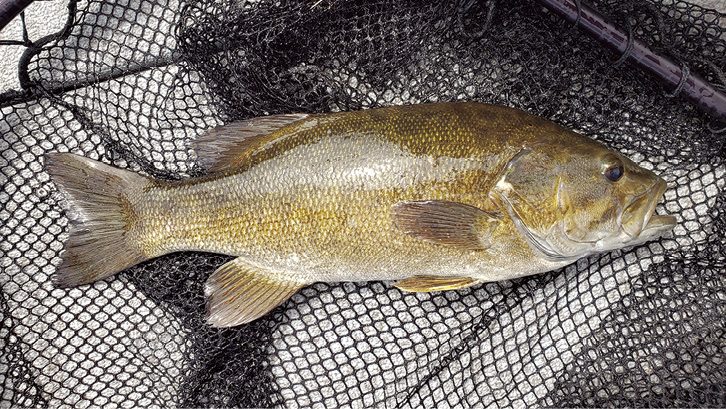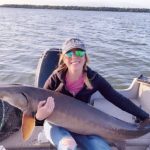Northwestern Ontario has an impressive number of fishing opportunities, with something for nearly everyone. The “glamour fish” like walleye, steelhead, muskie and salmon get most of the attention and pressure. Yet when I talk with people about the fish species they came in contact with first, it’s incredible how many say smallmouth bass. As often as not, that first bass was caught off a dock at camp or on a canoe trip. This doesn’t really surprise me, as smallmouth are quite common across much of northwestern Ontario and are relatively willing biters. Smallmouths are also one of the best fighting fish and always memorable. Here is a primer on how to catch the smallmouth bass.
History
Smallmouths are native to some portions of northwestern Ontario, including Lake Superior and many of the tributaries that run into it. However, the majority of smallmouth bass fisheries in the region came from stockings that took place decades ago. Bass have spread like wildfire through many watersheds and have been illegally added to some waters by people who wanted them as a sport fish. Although bass are a great fish to catch, they can create havoc when stocked in trout lakes, for instance. Bass are here to stay in lakes where they are already found, but they should never be carried to new lakes or rivers.
Where to Find Them
In lakes, smallmouth bass will normally gravitate to the parts of the watershed that have “structure.” The term structure refers to a wide variety of things including points, rock reefs, boulder strewn shorelines, fallen trees, docks and islands. Smallmouth also like currents and can be found where rivers come in or flow out of lakes. Smallmouths are fond of areas with a lot of boulders as they often dine on crawfish, which frequent rock laden areas. Bass also appreciate areas of shade and will hide under docks, boat houses and floating dive platforms when the sun is high. Large weed beds are often a smallmouth hide out, especially in the summertime. Weed beds are difficult to fish but can hold some of the larger fish in a lake. In the evenings and mornings, smallmouth bass will move shallow and patrol sandy bays where they chase down minnows, frogs, leeches and aquatic insects. Bass don’t mind very warm water, which means the fishing for them is often good during the dog days when nothing else is biting.
Angling Techniques
I cannot think of many lures that I’ve not caught bass on over the years. The aggressive nature of these fish means they can be remarkably indiscriminate about what they bite. I’ve caught smallmouth bass on everything from weedless pike spoons to 10-inch muskie baits. However, there are a few techniques and lures that bass really like and consistently respond to.

Jigs and plastics are the go-to for many bass anglers, whether they are weekend warriors or professionals. A lighter weight jig head of 1/4- or 3/8-ounce matched with a black, brown or white 4-inch twister will do the job quite well. Another option is a 4-inch plastic minnow or small rubber worm. These jigs are cast to shore and retrieved in a slow, undulating way, or jigged vertically. Another very popular plastic lure is called the tube jig. The tube jig presentation has the lead head slipped inside a tube-shaped plastic lure. This makes the presentation soft and natural feeling so when the bass pick it up, they are slower to reject it. Tubes also look a lot like a crawfish, especially when they are hopped along rocks and boulders. Tube jigs in brown, pumpkinseed, purple and blue are popular choices for smallmouth.
A more aggressive way to catch bass is with crankbaits. This family of lures is large and includes minnow shaped “jerk baits” like the Rapala Husky Jerk; shad shaped baits such as the Rapala Shad Rap and fat bodied lures like the Bagley Big O. All crankbait types will catch smallmouth in the right situation.
The jerk bait style of crankbait is cast to a shoreline or structure and is fished quickly with downward thrusts of the rod tip. The lure will dart through the water like a wounded baitfish and strikes are hard. The Shad Rap is cast or trolled and moves more slowly. There is no jerking needed as the wiggle of the lure and profile is the trigger. The fatter bodied crankbaits have a small lip and are great for casting into shallow rocks or on the tops of reefs where the bass are looking for crayfish. Crankbaits that are pearl, silver/black or brown/crawdad will fool even the wiliest old bass.
For sheer heart-stopping thrills, nothing is more fun than fishing bass on topwater lures. There are a wide variety of these lures but the Rebel Pop R, Rapala Skitter Prop and the Heddon Tiny Torpedo are three of my favourites. The trick with a topwater is to get the attention of a bass by having the lure make a splash or some noise on top. In between short retrieves, you let the lure float for a bit with no movement. It is amazing how often the bass will take the topwater when it is sitting dead still. And, be warned; the strike of a bass on topwater will make even the most jaded angler weak in the knees. It is one of the very top thrills in angling.
Smallmouth bass fishing is on now and will only get better as the summer wears on. Do yourself a favour and chase some smallmouth this season—they will not disappoint.






